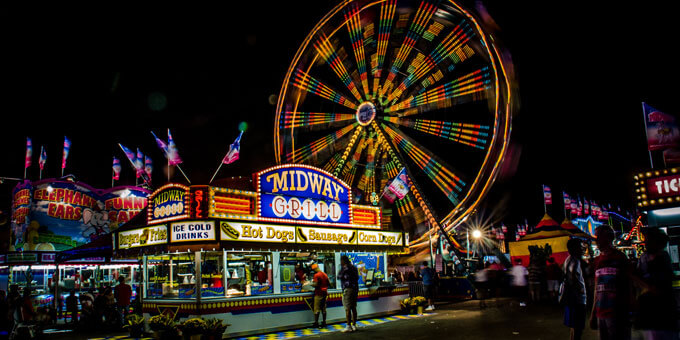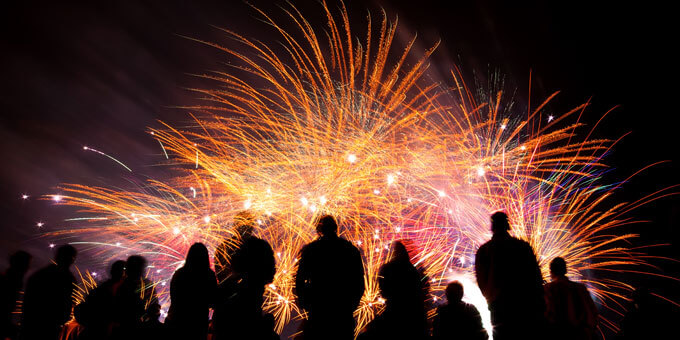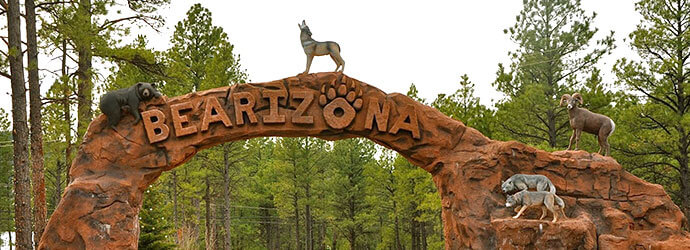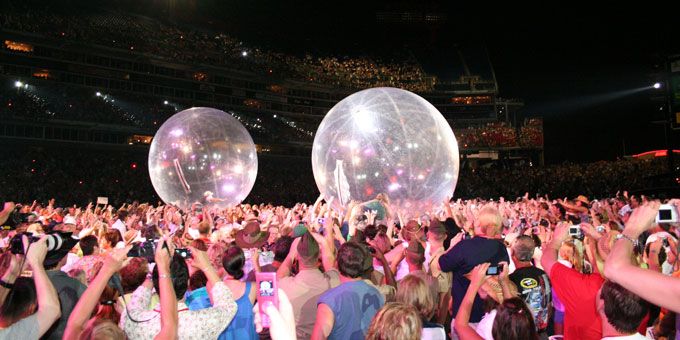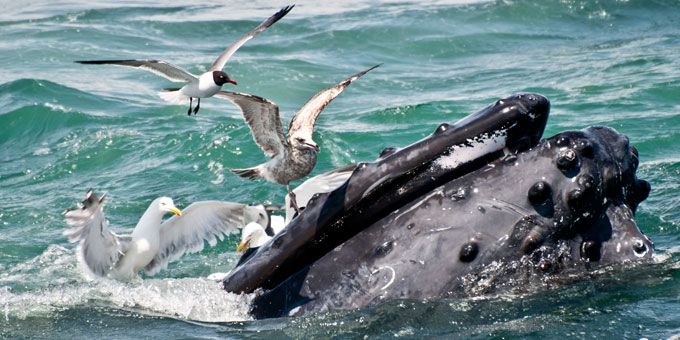For as long as there have been humans, we have gazed up at the night skies in wonder of its beauty and majesty. There are countless songs and legends about the celestial bodies that constantly move overhead, and scientists have been studying them for centuries. While modern day electricity and light pollution makes seeing the stars a little difficult in most cities, there are still places where these stunning lights can still be seen with as much clarity as ever. Texas, in particular, is filled with superb stargazing locations. So next time you're looking for a quiet spot for a bit of romantic or scientific stargazing, check out one of these 22 locations where the night skies can still be seen in all their bewitching beauty.
Although the Lonestar State is brimming with beauty, some of the most fantastic sights can be seen in the night sky. Embark on an astronomy-driven adventure and head out to experience the world around you at some of the best stargazing locations in the state.

Brazos Bend State Park[1]
Needville, TX
Brazos Bend State Park encompasses nearly 5,000 acres of diverse ecosystems. The beautiful Brazos River flows through the park attracting a wide range of birds and mammals and the park is home to a large population of American alligators which can be viewed in the wetlands within the park. After a day of play and adventure, sit among the wildlife and enjoy the million points of light shining down in this beautiful and peaceful park.

Caprock Canyons State Park[2]
Quitaque, TX
Caprock Canyons State Park has a variety of landscapes spread over 15,000 acres. The park is home to a multitude of plants and animals that can be seen in their natural habitat. The only wild bison herd in the state of Texas makes it home in the canyons of the park. Since the canyons block out any of the lights from the nearby towns, the park is a perfect place to view the beauty of the night sky. The vast swirling Milky Way can usually be seen on a clear night.

Davis Mountains State Park[3]
Fort Davis, TX
Davis Mountains State Park is a remote destination with adventure and beauty at every turn. The park’s “best little bird blind in Texas” allows visitors the chance to get a glimpse of the localized stunning Montezuma quail. There are a variety of hiking trails, or visitors can take a leisurely drive through the mountains. The quiet tranquility of the landscape allows for amazing stargazing among the majestic peaks.

Lost Maples State Natural Area[4]
Vanderpool, TX
Lost Maples State Natural Area is a colorful wonderland in the fall months. The vibrant hues of the maple leaves in reds, greens, yellows, and browns is nature’s way of saying farewell to the colors of summer, before the barren cold of the winter months. The canyons in the park are home to a variety of species of plant and bird-life. The park offers visitors spectacular evening views of global star clusters in a sky void of city lights.

Enchanted Rock State Natural Area[5]
Fredericksburg, TX
Enchanted Rock State Natural Area is as beautiful as its name. The park’s distinctive centerpiece is a 425 foot high pink granite formation. The formation’s estimated age is one billion years, and it is the focal point of many Native American legends. The park is listed as an International Dark Sky Park, which means it is considered to be exceptional for stargazing. With the mystery of Enchanted Rock as a backdrop, visitors can gaze into the night sky envisioning a time of long past.

Colorado Bend State Park[6]
Bend, TX
Colorado Bend State Park promises a fun-filled day of outdoor activities such as camping, fishing, and swimming. The beautiful Colorado River runs through the park, making the scenery from the campsites breathtaking. Visitors can hike to the picturesque Gorman Falls, or choose to tour one of the 150 wild caves within the park. Spending a night in park with only the sounds of the flowing river and nature’s wildlife allows visitors to view the dazzling night sky in peace.

Copper Breaks State Park[7]
Quanah, TX
Copper Breaks State Park offers a variety of hiking trails for both amateurs and experienced hikers. A portion of the Texas Longhorn Herd calls the park home, and will sometimes allow themselves to be seen by visitors. Located in the Texas panhandle, this park has been designated an International Dark Sky Park with “Gold-tier” viewing status. This renowned stargazing location provides a stunning dark landscape for gazers to view a multitude of wondrous celestial objects in the night sky.

Canyon of the Eagles Resort[8]
Burnet, TX
Canyon of the Eagles Resort houses 940 acres of beautiful landscape located on Lake Buchanan, one of the largest bodies of water in central Texas. The resort includes guest rooms, an RV park and camping accommodations for those wanting a true outdoor adventure. The resort features an award-winning restaurant, a swimming pool, and a friendly lounge that offers guests a breathtaking sunset view from the covered porch. Guests have free access to the Eagle-Eye Observatory to gaze into the vast reaches of the universe through the various telescopes. This is the vacation that has it all for adventurous stargazers and outdoor lovers. While staying at the resort, be sure you don't miss touring Fort Croghan[9], a 19th century fort and museum which is only a few miles away.

George Observatory[10]
Brazos Bend State Park
Needville, TX
George Observatory is located in the Brazos Bend State Park and houses three domed telescopes to view the wonders of the night sky. At various times throughout the year visitors can clearly view the glowing wonder of Saturn’s rings, the mysterious cloud belts of Jupiter, or a variety of other treasures of the endless night sky. The observatory also offers a Discovery Dome, overnight stargazing events, a meteorite display and various other activities throughout the year.

Pedernales Falls State Park[11]
Johnson City, TX
Pedernales Falls State Park features cascading waterfalls that flow over naturally formed layers of limestone making this a geological enchantment. It’s not uncommon to see the endangered golden-cheeked warblers nesting in the park in early spring. The park experiences minimal light pollution from nearby towns and a view of the Milky Way flowing over the Pedernales Falls is a sight that will not soon be forgotten.

Resaca de la Palma State Park[12]
Brownsville, TX
Resaca de la Palma State Park is a birdwatcher’s paradise. Its semi-tropical environment is said to be a native habitat for one of the largest variety of bird species in the World Birding Center network and the park itself isn't too far away from Glady's Porter Zoo[13], making this a great area for animal lovers. Located outside of Brownsville, Texas, Resaca de la Palma is removed from the pollution of nearby towns and at night the blanket of darkness allows visitors to see more stars than can even be counted in the velvety darkness.

Devils River State Natural Area[14]
Del Rio, TX
Devils River State Natural Area offers a variety of water activities on the beautiful Devils River. Fed by numerous clear springs, Devils River is not only ecologically intact, it is an excellent fishing location. But, more importantly, this isolated natural beauty offers quiet dark night skies complemented by the rushing untamed sound of the Devils River.

McDonald Observatory[15]
Fort Davis, TX
McDonald Observatory is located on Mount Locke in the Davis Mountains. The observatory houses a variety of state-of-the-art equipment to view the amazing night sky. Here visitors can find some of the darkest night skies in the U.S., and the observatory staff offers tours and star parties during weekdays for guests. The location and equipment available are an amateur astronomer’s treasure box into the vast reaches of the universe.

Rafes Urban Astronomy Center[16]
Ponder, TX
Rafes Urban Astronomy Center is located on the grounds of the University of North Texas. The center includes two classrooms to share information about the celestial bodies of the universe. It also has four viewing huts that house telescopes where visitors can view the constellations, deep sky objects such as star clusters, and other far away galaxies. The center is normally only open to students, but the university holds star parties for the public on the first Saturday of every month. Be sure to check the center's schedule before heading out, and plan on stopping by Ranchman's[17], a local favorite steakhouse, and fill up on delicious food to prepare for a full evening of stargazing. After all, it's hard to enjoy the galaxies overhead if you're hungry!

Devil's Sinkhole State Natural Area[18]
Rocksprings, TX
Devil's Sinkhole State Natural Area houses the largest vertical chamber cavern in the state. This more than 350 feet deep natural wonder is home to a large colony of Brazilian free-tailed bats and numerous cave swallows. The park is made up of more than 1,800 acres of wild and undeveloped natural landscape. Not only will visitors be able to marvel at the clear night sky filled with millions of twinkling lights, but the millions of bats that call the park home also make this for a stunning night trip.

SFA Observatory[19]
Stephen F. Austin State University
Nacogdoches, TX
SFA Observatory is the second largest observatory in Texas. It is used by the Austin State University as a teaching resource and a research facility. The observatory is frequently (but not always) open to the public and houses a variety of powerful computer-controlled telescopes within the observatory along with free-standing telescopes on the grounds. Its location is far from city lights making the velvet black night sky a feast of celestial lights and colors.

Fort Griffin State Historic Site[20]
Albany, TX
Fort Griffin State Historic Site is a former U.S. Calvary fort which houses a wealth of American history. Home to a heard of longhorn cattle, the site includes remnants of Fort Griffin, built in 1867. Visitors can tour one of the many historical buildings and then spend the night camping on the same grounds where members of the Sixth Calvary once welcomed passing wagon trains crossing the Texas prairie. The area has some of the clearest and darkest night skies for viewing galactic sights, and there are monthly stargazing events held here as well.

Big Bend National Park[21]
Big Bend National Park contains a wealth of plant life, birds, reptiles, and mammals. This breathtaking mountain range is surrounded by a desert landscape where sea fossils and dinosaur bones have been discovered, and visitors can even stop by La Kiva Restaurant and Bar[22], a dinosaur-themed restaurant to fill up on some delicious BBQ in preparation for a night of stargazing. The Big Bend National Park has been designated an International Dark Sky Park, and is definitely not something stargazers will want to miss. Encompassing over 800,000 acres, visitors can enjoy the diverse population of the park during daylight, and gaze upon Venus and the heavens above after the sun goes down.

Kickapoo Cavern State Park[23]
Brackettville, TX
Kickapoo Cavern State Park offers a smorgasbord of trails for hiking and mountain biking. The 20 known caverns located in the park contain a wonderland of beautiful icicle-like stalactites and stalagmites. Visitors will love relaxing and gazing into the celestial beauty of the velvety rich night sky at this picturesque park.

Balmorhea State Park[24]
Toyahvale, TX
Balmorhea State Park is home to the world’s largest spring-fed swimming pool. The crystal clear water among the desert sands makes this 46 acre park a true paradise. The quiet remote location creates the perfect surroundings to enjoy a variety of nature’s sounds while looking into the vast beautiful expanse of the universe.

South Llano River State Park[25]
Junction, TX
South Llano River State Park offers visitors a variety of outdoor activities along its two miles of beautiful river frontage. The spring-fed South Llano River’s clear water attracts a large variety of wildlife and abundant wild bird species. The park is well known for its turkey roost, considered one of the largest in central Texas. The night sky offers an abundance of family stargazing as well. There may even be a turkey or two to share in the enchantment of the beauty of the starry night.

Seminole Canyon State Park & Historic Site[26]
Comstock, TX
Seminole Canyon State Park & Historic Site is home to a multitude of bird species, and a variety of hiking and mountain bike trials. Erosion within the park has created spectacular rock overhangs. At the Fate Bell Shelter site visitors are not only welcomed by some of the oldest Native American pictographs, but a night sky so rich and deep it almost feels like time has stood still.
Have you ever stargazed at any of these locations? Do you know any fantastic places in Texas that we need to add to our list? Share your stories and stargazing photos with us, and don't forget to share this article with your stargazer friends!










